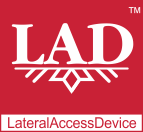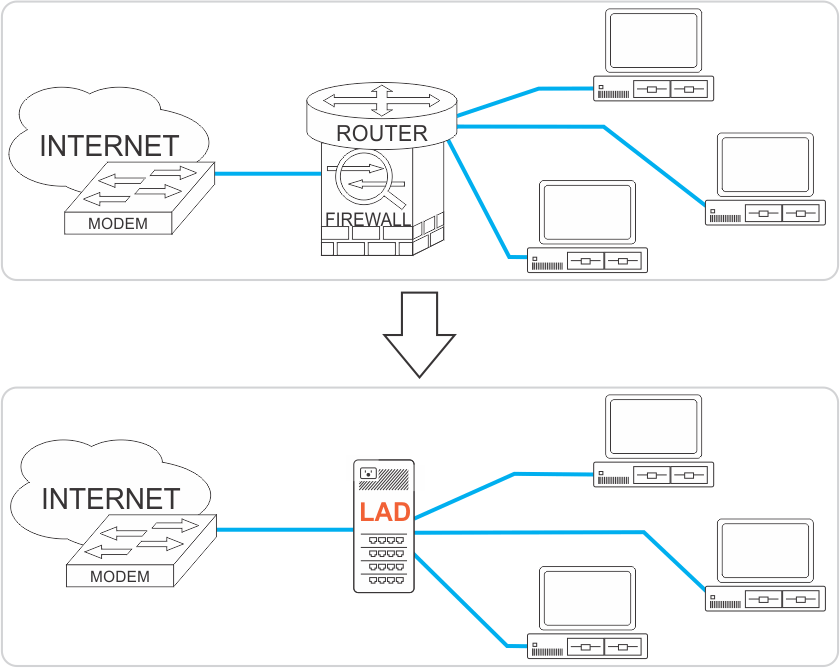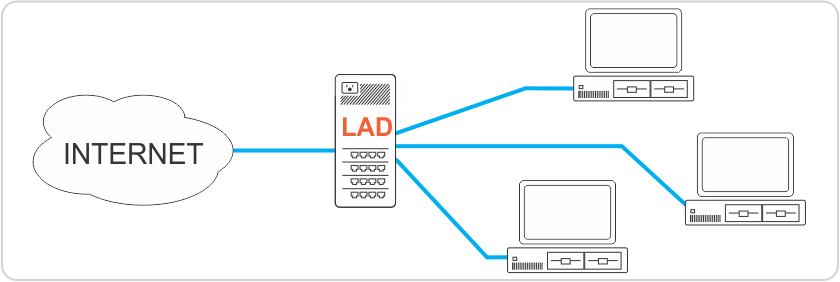
LateralAccessDevice
takes you back to before the Internet
How It Works | Download LAD | Support | LAD Security | Features & Uses | Resources | Members | User Guide
Connecting Other Devices to LADLateralAccessDevice offers users a lot of versatility when it comes to where to place it on the network and how to connect other devices to it. With its suite of functionalities, LAD may act as a firewall, as a router, as a packet capture appliance and as an access controller. In any of these roles, LAD also generates automated reports on network activity, including MAC addresses, IP addresses and DNS requests. Below are a few examples of how you can connect your computers and other devices to LAD, but they are by no means exhaustive. The addition of LAD to your network will not affect the cabling to your ISP or between your modem and ISP. LAD as a Firewall or Firewall/RouterWith its NAT services and multi-dimensional firewall features, you may use LAD as a drop-in replacement for your current firewall or firewall/router combo. Set up is easy: remove the old firewall box and put LAD in its place, with the Ethernet cable from the modem or other internet source plugged into port 1 and everything else into the other ports.  LAD as a Router Behind a FirewallIf you wish to keep your current firewall, you may place LAD between the firewall and all your other devices. In this topology, LAD provides routing services for the network. In the same location LAD may also provide monitoring, packet capture and local access control functions. If you wish to connect more devices than LAD has ports, a simple switch may be connected to one of LAD's ports and the additional devices then connected to the switch.  LAD as a Provider of PPPoE and VLANIf you wish LAD to provide PPPoE and VLAN, simply place it between your modem or other internet source and all the other devices on your network. Just as above, LAD can concurrently provide firewalling, routing, packet capture, monitoring and other features.  Deeper in the NetworkMany users may want to place LAD (or multiple LADs) deeper within their network to provide packet capture and monitoring of specific network assets which require more oversight and protection than other computers and servers (in this example, a database/file server storing sensitive information). In this role, LAD may simply provide packet capture and monitoring, but it could also be configured to control and moderate access to the target devices, for example, by limiting connections to only local devices or only allowing access during business hours.  Offices or Apartment Buildings with EthernetMany office buildings and apartment buildings have internet services preinstalled, with one modem for the whole building that is inaccessible from the individual offices or apartments. In this case, the office or apartment would likely have Ethernet wiring through which Internet access is supplied. In these situations, LAD may be placed between the Ethernet source and everything else.  |